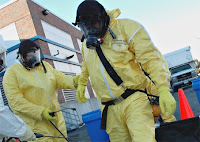
The basic purpose of site control is to minimize any contamination or potential contamination of the workers, protect the general public from any site hazards and to prevent in form of vandalism. Especially, in emergency situations, site control is extremely important. There are various components to any site control program that helps in controlling the activities and the movements of people and equipment at any hazardous waste site.
Here are a few site control procedures that you can implement in your safety program to reduce worker exposure to chemical, biological, physical and other forms of safety hazards:
1. Make a proper site map.
2. Prepare your site for specific activities.
3. Establish separate work zones.
4. Establish and ensure that your workers strictly adhere to the decontamination procedures.
5. Establish communication networks.
6. Set up site security measures.
7. Enforce work practices that are safe.
Site control, essentially depends upon a number of factors including: site characteristics, the size of the site and the surrounding community. The site control program should be started off in your first planning stages and should be based on all your site information and assessments.
Here are a few site control procedures that you can implement in your safety program to reduce worker exposure to chemical, biological, physical and other forms of safety hazards:
1. Make a proper site map.
2. Prepare your site for specific activities.
3. Establish separate work zones.
4. Establish and ensure that your workers strictly adhere to the decontamination procedures.
5. Establish communication networks.
6. Set up site security measures.
7. Enforce work practices that are safe.
Site control, essentially depends upon a number of factors including: site characteristics, the size of the site and the surrounding community. The site control program should be started off in your first planning stages and should be based on all your site information and assessments.
Comments
Post a Comment